What Shoes Did Hanfu Wear? – Ancient Times (Part 1)

Shoes are an important part of Hanfu culture. In ancient China, people even used a poetic term—“foot clothing” (足衣)—to describe shoes and socks. As the name suggests, it simply refers to garments worn on the feet.
In the last article, Silkdivas shared some classical makeup looks that pair beautifully with Hanfu. While we couldn’t cover every single style, we picked out the most iconic ones from different dynasties.
Today, let’s shift focus to footwear and take a look at the types of shoes that go well with Chinese outfits.
Ⅰ. Cloth Shoes
When Chinese outfits first regained popularity in recent years, many people chose to wear simple cloth shoes with their outfits. Traditional cloth shoes, with a history of over 3,000 years, are a testament to Chinese craftsmanship. They have no fixed shape or design, which makes them versatile and easy to pair with Hanfu.
Archaeological evidence shows that the earliest handmade cloth shoes were worn by a Western Zhou warrior, whose kneeling statue was unearthed in Houma, Shanxi. Cloth shoes remain a timeless match for Hanfu—they make the feet look light and elegant.
That said, the soles of cloth shoes are usually flat, which makes them less suitable for long walks. Some pairs even have soles so thin that walking on rough ground can feel uncomfortable.
For a slightly more stylish take, you’ll often see designs like these ↓↓
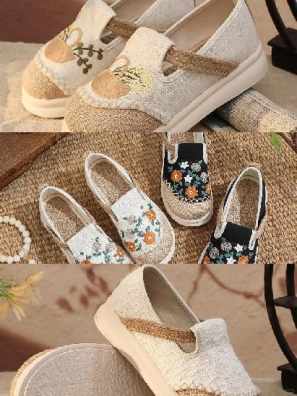
For a more classic look, you might see styles like this ↓↓
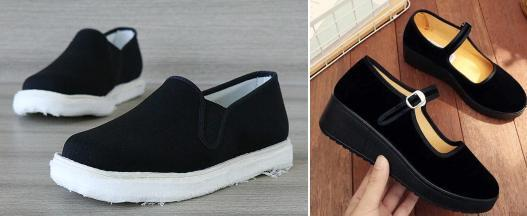
In recent years, as more ancient shoes have been unearthed and reconstructed, a wide variety of Hanfu shoes have made their way into the market. Many of these designs are based on murals and archaeological finds, carrying deep historical significance. Wearing them feels like stepping directly into the long river of Chinese history and culture.
Ⅱ. Embroidered Shoes
The term “embroidered shoes” or “Hanfu shoes” is modern. In ancient times, shoes had many different names, such as zuyi/足衣 (footwear), lü/履 (shoes), ji/屐 (wooden clogs), xue/靴 (boots), or xi/舄 (ornamental shoes).
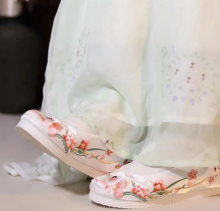
The exact origin of embroidered shoes is hard to trace, but one famous story points to the “Jin Kingdom shoes” from southern Shanxi. Around 660 BCE, Duke Xian of Jin expanded his territory by conquering ten neighboring states.
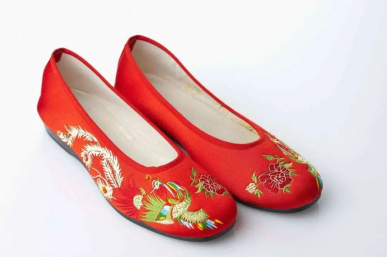
To commemorate his achievements, he ordered all the women in the palace to embroider specific motifs—like pomegranates, peach blossoms, fingered citrons, and grapes—on their shoes. From then on, embroidery flourished in Jin, extending from shoes to garments and other items, creating a lasting tradition.
Ⅲ. Bow Shoes & Cloud-Toe Shoes
These were shoes traditionally worn by women with bound feet. Because foot binding created an arched, bow-like shape, the shoes were called bow shoes. The practice of foot binding is thought to have started either in the Southern Dynasties or during the Five Dynasties period.
By the Ming and Qing dynasties, the shoes came in various styles—flat or elevated soles—often decorated with embroidery, pearls, and other ornaments.

Today, bow shoes are among the most common and popular Chinese outfits shoes on the market. They pair especially well with Hanfu, giving a delicate and graceful look, while also being lightweight and comfortable—making them a favorite for many enthusiasts. Perhaps because this shoe shape best matches the popular image of “ancient style” and is easy to produce ~
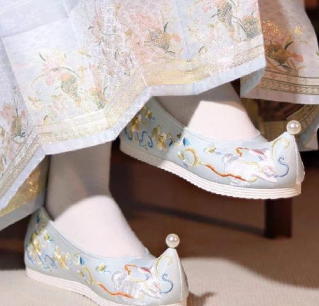
A hundred years ago in China, the measure of a woman’s beauty wasn’t just her face or figure, but the size of her feet. The so-called “three-inch golden lotus” was the ultimate standard of feminine beauty at the time.
Of course, the bow shoes you see today are quite different. Instead of the tiny “golden lotus” versions, modern bow shoes are usually boat-shaped, sometimes even redesigned into boots. They may also be decorated with pearls or gemstones to symbolize wealth and elegance.
Another common variation includes styles with a small cushion across the instep, like this ↓↓
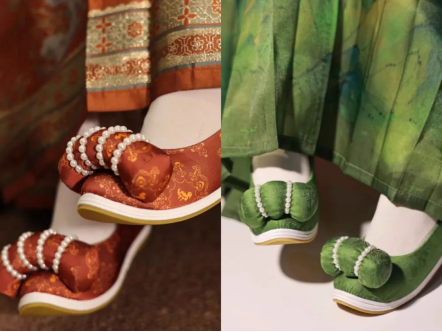
This style is also a modern simplification by merchants, but its shape was inspired by historical relics—most notably the Tang Dynasty cloud-toe shoes.
A pair excavated in Astana, Xinjiang, is preserved in the National Museum of China, with brocade patterns of baoxianghua (a traditional floral motif) still clearly visible.
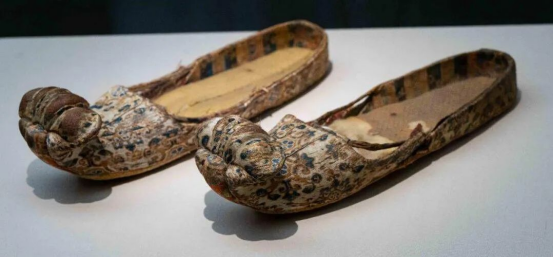
Ⅳ. Upturned-Toe Shoes
Shoes with upturned toes are one of the signature designs in Chinese outfits footwear. Both men’s and women’s shoes once had this feature, with the saying: “men’s shoes square, women’s shoes round.” The design dates back to ancient times, and by the Han dynasty, shoe construction had already evolved with more refined and distinct toe shapes.
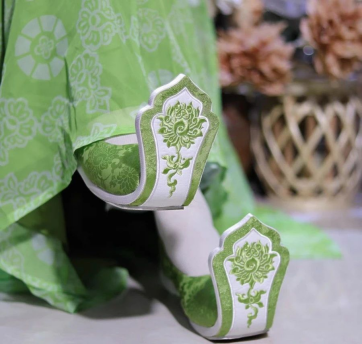
Archaeological finds from Astana (Xinjiang really is like a giant freezer for relics!) include shoes with dramatically raised, oversized upturned toes.
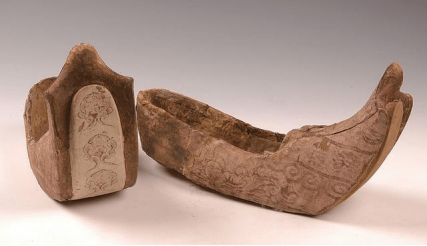
While this style isn’t very practical for long walks, it’s perfect for photoshoots, performances, or ceremonial dress—it adds flair and elegance. The upturned tips also served a purpose: they could help lift the hem of a long skirt to prevent tripping.
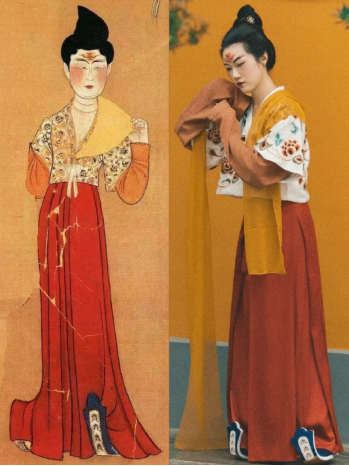
Interestingly, beyond aesthetics, these shoes may have given women a sense of security, as the reinforced toe could also be used for self-defense if needed.
Ⅴ. Square-Toed Shoes
Shoes with square toes first appeared in the early Western Han period and were mainly worn by nobles. After the mid-Western Han, they became common across different social classes, especially among men.
By the Jin dynasty, fashion trends shifted, and women also started wearing them. In the Tang dynasty, square-toed shoes were even used as dance shoes, but from the Five Dynasties period onward, they gradually became men’s footwear only.
Archaeologists discovered a pair of colorful silk square-toed shoes from the Eastern Jin period in Astana, Turpan, Xinjiang. Amazingly, even after more than 1,600 years, the colors remain vivid.
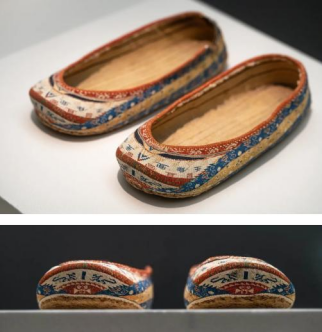
The shallow-cut, square-toe design is quite distinctive, and when paired with traditional outfits like the Jin-style ruqun, quju, or zhiju, it creates a unique and elegant look.
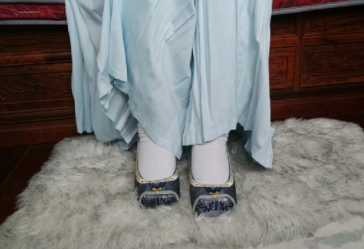
Ⅵ. Black Boots
Known in Chinese as 皂靴/皁靴 (literally “black boots”), these were high-top black boots with thick white soles, traditionally worn by officials and scholars. They came in both cloth and leather versions.

The style originated in the State of Zhao during the Warring States period, influenced by nomadic clothing styles that the Han people adopted. By the Sui and Tang dynasties, black boots had become extremely popular and were standard attire for nobles and government officials.
Today, many men like to pair tall leather boots with Hanfu, giving off a dashing, stylish look. Taller women also look striking in them—elegant yet powerful.
Summary
Here’s a fun fact about Chinese footwear history: for thousands of years, shoes in China were made without distinguishing between left and right. Craftsmen used a single mold to make a pair of identical shoes, called zhengjiao shoes (literally “straight shoes”). To the ancients, shoes had to match perfectly—mismatched pairs were considered unlucky or impure.
The very first Chinese leather shoes with distinct left and right sides weren’t made until 1876—barely a little over a century ago!
If this topic interests you, stay tuned—next time we’ll explore how Chinese outfits can be styled with more modern footwear. Share your thoughts in the comments—we’d love to hear which styles you like best!
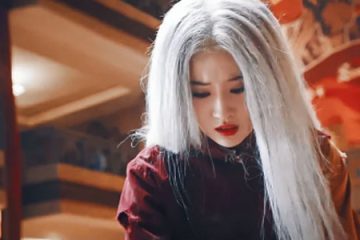
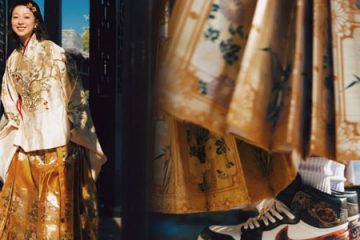
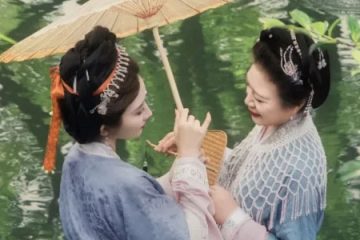
0 Comments